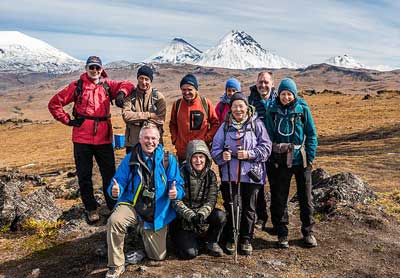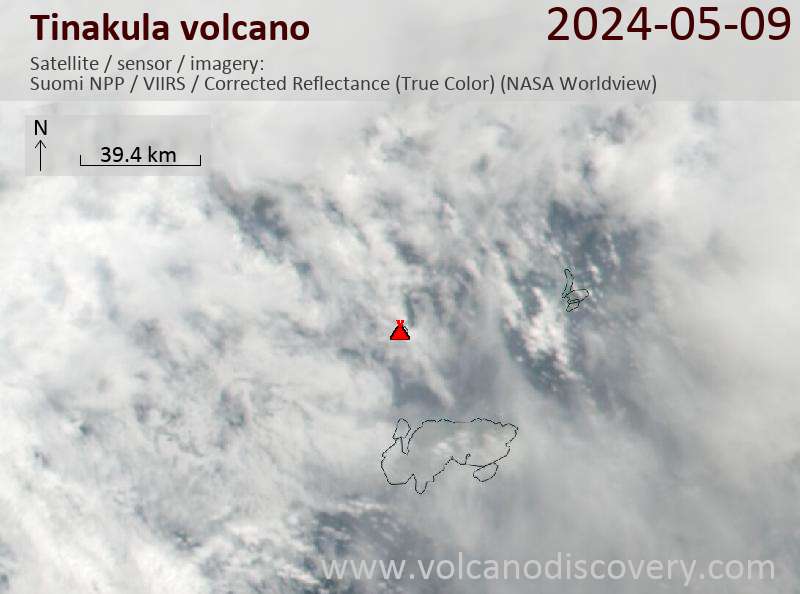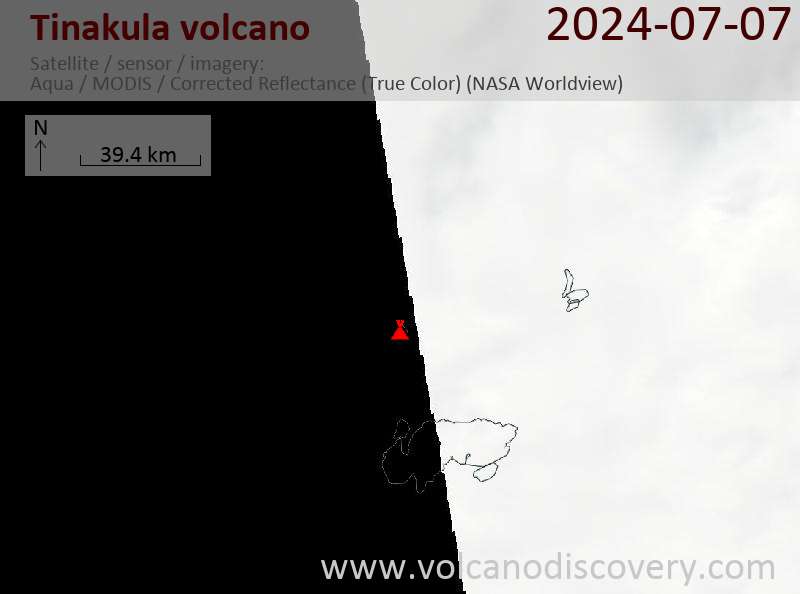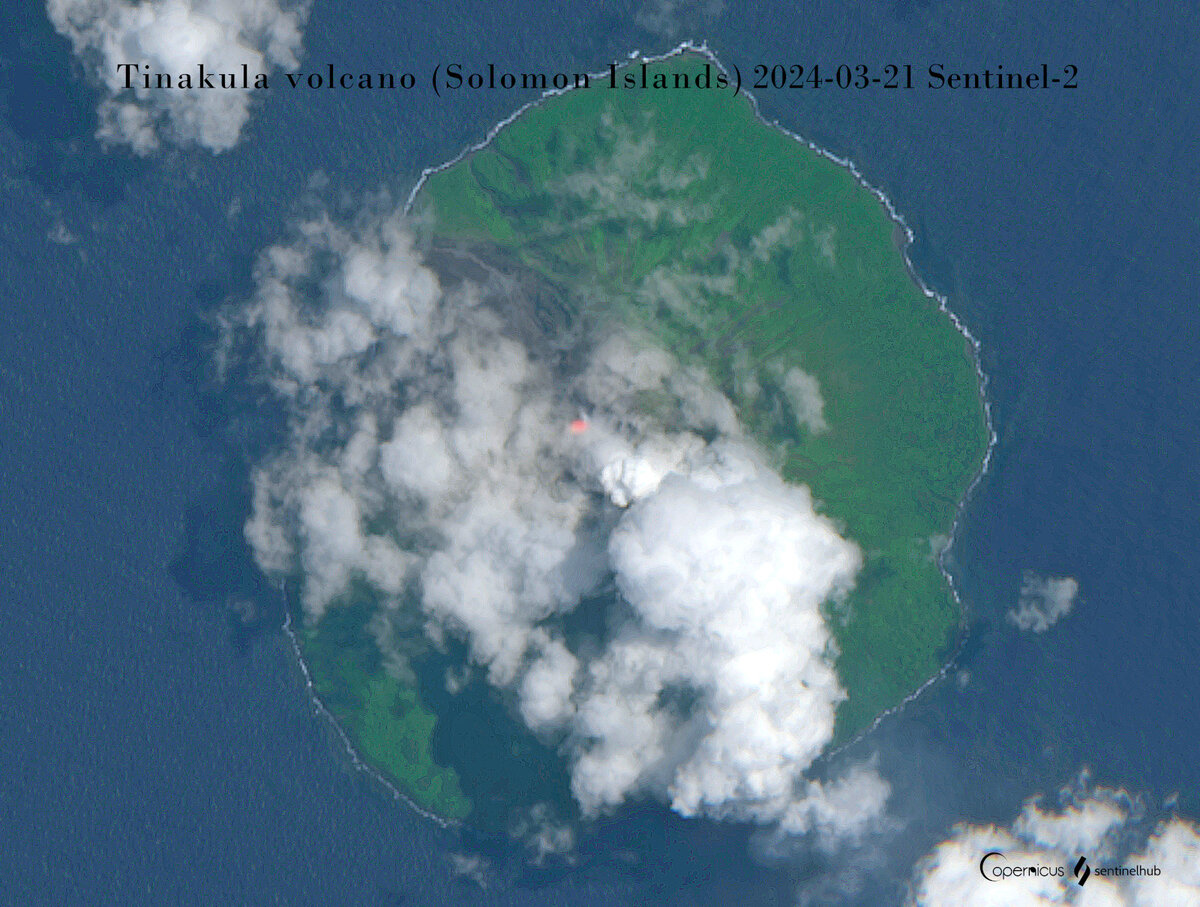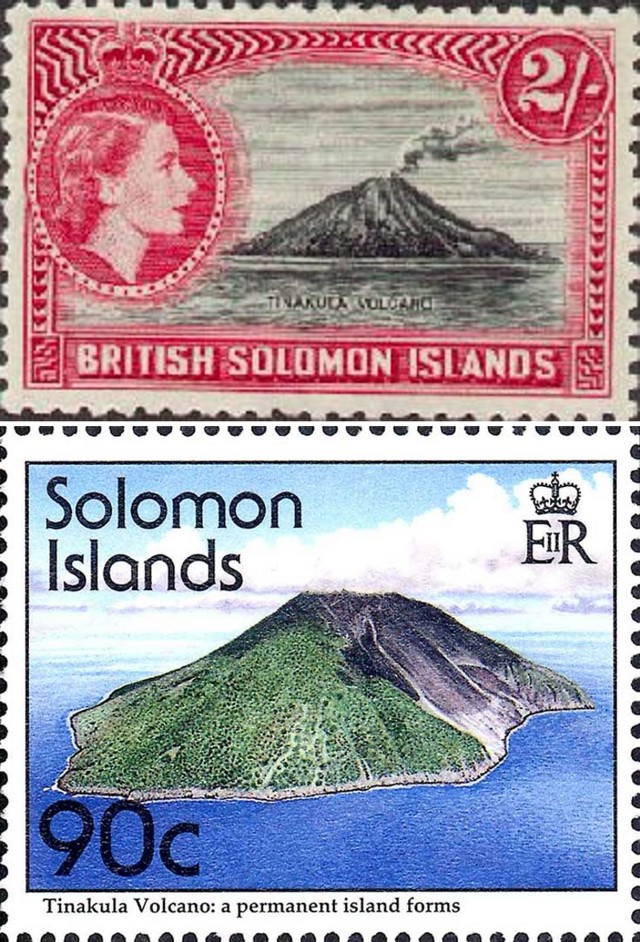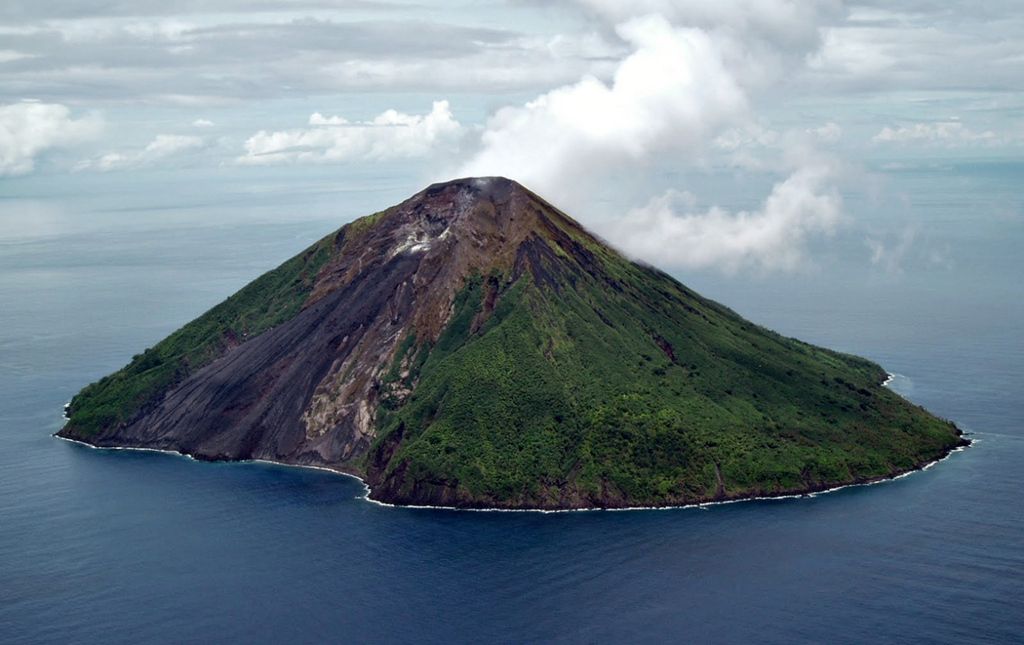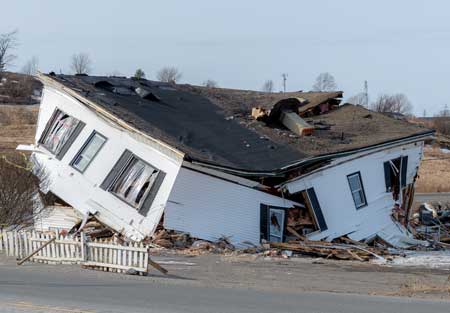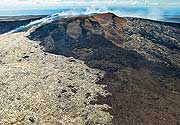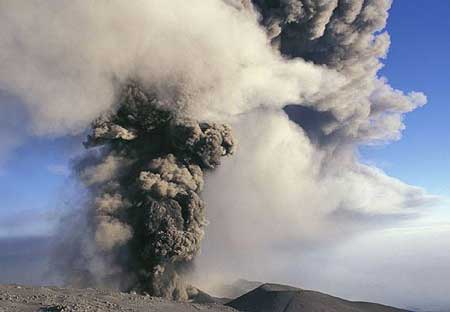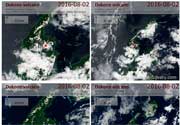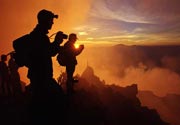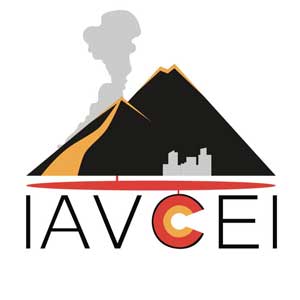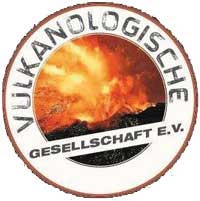Tinakula Volcano
Santa Cruz Islands, Solomon Islands, -10.38°S / 165.8°E
Condition actuelle: en éruption (4 sur 5)
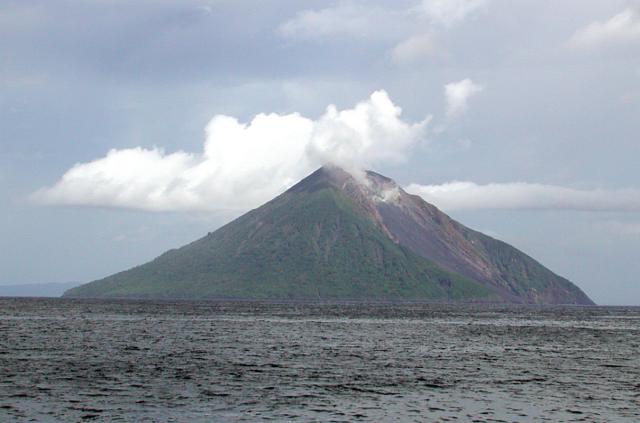
Tinakula volcano is located at the NW end of the Santa Cruz islands in the Solomon Islands. It forms a small 3.5 km wide and steep island, which is the upper 25% of a very active stratovolcano that rises more than 3 km from the sea floor. Tinakula is very similar to Stromboli volcano in Italy.
Tinakula's active summit crater is often in strombolian activity and the glowing bombs it ejects often roll down down a steep slope of loose ash and scoria extending to the sea on the SW side of the island.
The small 3.5 km wide Tinakula Island was inhabited until 1971 when a major eruption and a tsunami occurred and prompted people to abandon the island.
Tinakula has been frequently active since it was first discovered by the Spanish explorer Álvaro de Mendaña de Neira in 1595.
Eruptions du volcan Tinakula: 2019 (?), 2012, 2008-2011, 2006-07, 2002 (?), 2001-02, 2002 (April)-2001, 1999, 1995, 1989-90, 1984-85, 1971, 1965-66, 1955 (?), 1951, 1909, 1897, 1886, 1871, 1869, 1857, 1855, 1840?, 1797, 1768, 1595
Derniers séismes proches
| Heure | Mag. / Profondeur | Distance / Lieu | |||
Introduction
The mainly andesitic Tinakula volcano resembles Stromboli volcano in having a breached summit crater half-open to one side. It extends from the 851-m-high summit to below sea level. Landslides enlarged this scarp in 1965 and created an embayment on the NW coast.Frequent historical eruptions have originated from a cone constructed within the large breached crater. These have left the upper flanks of the volcano and the steep apron of lava flows and volcaniclastic debris within the breach unvegetated.
The flank cone of Mendana is located on the SE side, named after the first western observer of an eruption of the volcano.
Eruptions du volcan Tinakula
A major eruption of Tinakula began on 6 September 1971, when a large explosion occurred from the summit crater that produced 2 pyroclastic flows on the E and W sides of the volcano and was followed by a tsunami 30 minutes later. A second explosion, also followed by a tsunami occurred on 7 Sep.
The explosive activity at the summit was followed by an effusive phase that opened a fissure vent about half way up in the western wall of the landslide scar below the summit craters. A lava flow from this fissure reached the sea.
At the same time, intense strombolian activity continued from the summit and built up a new summit cone. Incandescent blocks were observed reaching several 100 m above the crater.
The activity increased towards the end of September and in October and ended in December. Most of the population (160 inhabitants) was evacuated. ...plus d'info
An powerful eruption occurred at Tinakula around 1840, producing pyroclastic flows on all sides of the island, killing its inhabitants.




